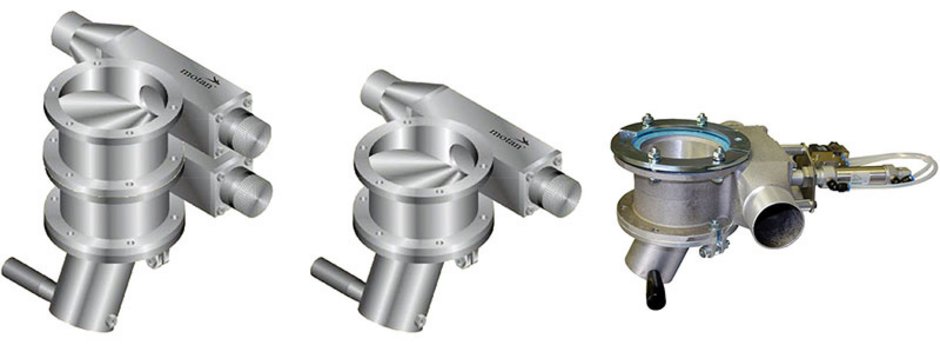47 - How does the material get from the storage bin into the conveying material feedline?

The way the material to be conveyed is fed into a material feedline depends heavily on the type of material and the conveying principle. One determining factor is, for example, whether if the material is free-flowing or non-free-flowing or whether it tends to form clumps. Conveying systems which use pressure will also require a different feeding method than systems using vacuum. The right choice and adjustment of material feeding is a deciding factor for operational reliability of conveying systems. Incorrect settings can result in reduction of throughput or even stop conveying altogether.
Suction probes or suction boxes are most commonly used with conveying systems. The suction probes can be inserted directly into the material and are used, for example, in octabins. Suction probes usually consist of a two-pipe system, where one pipe is for ventilation and the other for the actual conveying of the material. The reason for this is to be able to mix in enough air to ensure optimal loading of the material feed line (see mo’s corner issue 25).
Suction boxes are usually used under material silos, material hoppers and drying bins. Placing them at the lowest point guarantees that the material flow is optimal (assuming sufficient material is in the box). Suction boxes also require a device to mix in air. They are available with one or more suction points.
An alternative option is a controlled suction box, which makes it possible to purge after the conveying process on one side, but also allows “package conveying” on the other. This is particularly helpful with extremely hygroscopic material, long conveying distances and small throughputs, as the amount of material to be conveyed can easily be restricted.
Feeding of non-free-flowing, clumping material requires a different solution. In these cases, a dosing screw with an agitator can be used to “dose” the correct amount of material into the feed line. The agitator loosens up the material to ensure an even material flow.
The feeding principle for pressure conveying systems is similar. However, a rotary valve is usually used instead of a dosing screw, because the material must be fed into the feed line “against” the pressure.
Finally, there are suction probes of venturi material loaders, which suck in the material using the venturi-principle and then convey it further with compressed air (see mo’s corner issue 26).
You want to see examples of suction boxes within conveying systems? Click on www.motan.com for further information.
